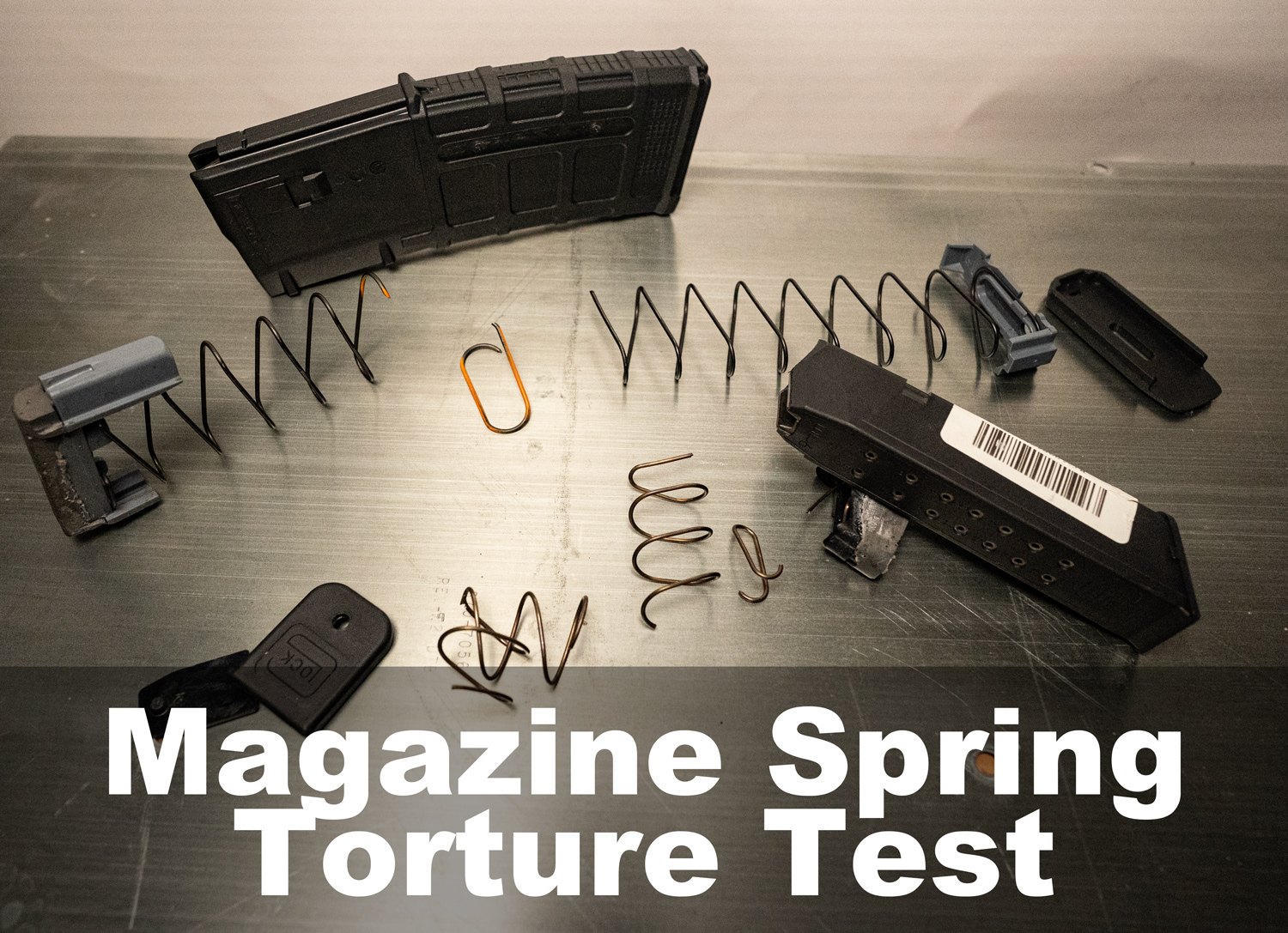Turns Out, Using Your Mags Is Really The Only Thing That Degrades ThemThe Firearm Blog
TFB has an interesting article. Reminds me of some magazines that I loaded before I left for a 4 years military tour. and left them in storage I hid them in a book case, out of sight and forgot about them for years. After several more years, I found them and they functioned 100%. Now, 4 decades later, they are still in working order. Typical 7 round military issue 45 acp magazines. The purpose of this thread is to find any scientific research, such as by long term military use or other testing where large numbers of magazines were kept loaded for extensive periods of time. This article says there is no "spring set" or wearing out of magazine springs.
On the other hand....people that sell springs and make millions off of them tell a different story. Wolff does say that older magazines such as my 1911 mag example do not have a problem but they say that new high capacity magazines do. I have never had a magazine spring fail, unless maybe I changed the ammo or recoil spring or did something to alter the original design parameters. As Clint Smith is fond of saying, people who come to his classes with 1911s of Glocks never have problems with those guns, unless the modify or enhance them. You change the locks on the door and the key no longer works, who knew?
And here is what Wollf says about them, basically just buy extra strong springs and fo get a bout it. I subscribe to that one.
""""5. How often should I change magazine spring? Should I unload my magazines, rotate magazines, load with fewer than the maximum rounds?
Magazine springs in semi-auto pistols are one of the most critical springs and are the subject of much debate and concern. Magazines which are kept fully loaded for long periods of time, such as in law enforcement and personal/home defense applications, will generally be subject to more fatigue than the weekend shooter's magazine springs in which the magazines are loaded up only when shooting.
Magazine design and capacity also affect the longevity of the spring. In many older pistol designs, maximum capacity was not the always the goal such as with the 7 round 1911 Colt magazines will last for years fully loaded. There was room for more spring material in these guns which reduces overall stress and increases the usable life of the spring.
More recently higher capacity magazine have become popular. These are designed to hold more rounds with less spring material often in the same space. This puts more stress on the spring and will cause it to fatigue at a faster rate. Unloading these magazines a round or two will help the life of the spring. Rotating fully loaded magazines will also help the problem somewhat but it is not always practical.
In applications where the magazine must be kept loaded at all times, a high quality magazine spring such as Wolff extra power magazine springs, will provide maximum life. Regular replacement of magazine springs will provide the best defense against failure from weak magazine springs. Regular shooting of the pistol is the best way to be sure the springs are still functioning reliably."""""
So, what say ye:
The choices are only meant to be thought provoking, not suggestions at all.
TFB has an interesting article. Reminds me of some magazines that I loaded before I left for a 4 years military tour. and left them in storage I hid them in a book case, out of sight and forgot about them for years. After several more years, I found them and they functioned 100%. Now, 4 decades later, they are still in working order. Typical 7 round military issue 45 acp magazines. The purpose of this thread is to find any scientific research, such as by long term military use or other testing where large numbers of magazines were kept loaded for extensive periods of time. This article says there is no "spring set" or wearing out of magazine springs.
On the other hand....people that sell springs and make millions off of them tell a different story. Wolff does say that older magazines such as my 1911 mag example do not have a problem but they say that new high capacity magazines do. I have never had a magazine spring fail, unless maybe I changed the ammo or recoil spring or did something to alter the original design parameters. As Clint Smith is fond of saying, people who come to his classes with 1911s of Glocks never have problems with those guns, unless the modify or enhance them. You change the locks on the door and the key no longer works, who knew?
And here is what Wollf says about them, basically just buy extra strong springs and fo get a bout it. I subscribe to that one.
""""5. How often should I change magazine spring? Should I unload my magazines, rotate magazines, load with fewer than the maximum rounds?
Magazine springs in semi-auto pistols are one of the most critical springs and are the subject of much debate and concern. Magazines which are kept fully loaded for long periods of time, such as in law enforcement and personal/home defense applications, will generally be subject to more fatigue than the weekend shooter's magazine springs in which the magazines are loaded up only when shooting.
Magazine design and capacity also affect the longevity of the spring. In many older pistol designs, maximum capacity was not the always the goal such as with the 7 round 1911 Colt magazines will last for years fully loaded. There was room for more spring material in these guns which reduces overall stress and increases the usable life of the spring.
More recently higher capacity magazine have become popular. These are designed to hold more rounds with less spring material often in the same space. This puts more stress on the spring and will cause it to fatigue at a faster rate. Unloading these magazines a round or two will help the life of the spring. Rotating fully loaded magazines will also help the problem somewhat but it is not always practical.
In applications where the magazine must be kept loaded at all times, a high quality magazine spring such as Wolff extra power magazine springs, will provide maximum life. Regular replacement of magazine springs will provide the best defense against failure from weak magazine springs. Regular shooting of the pistol is the best way to be sure the springs are still functioning reliably."""""
So, what say ye:
The choices are only meant to be thought provoking, not suggestions at all.






